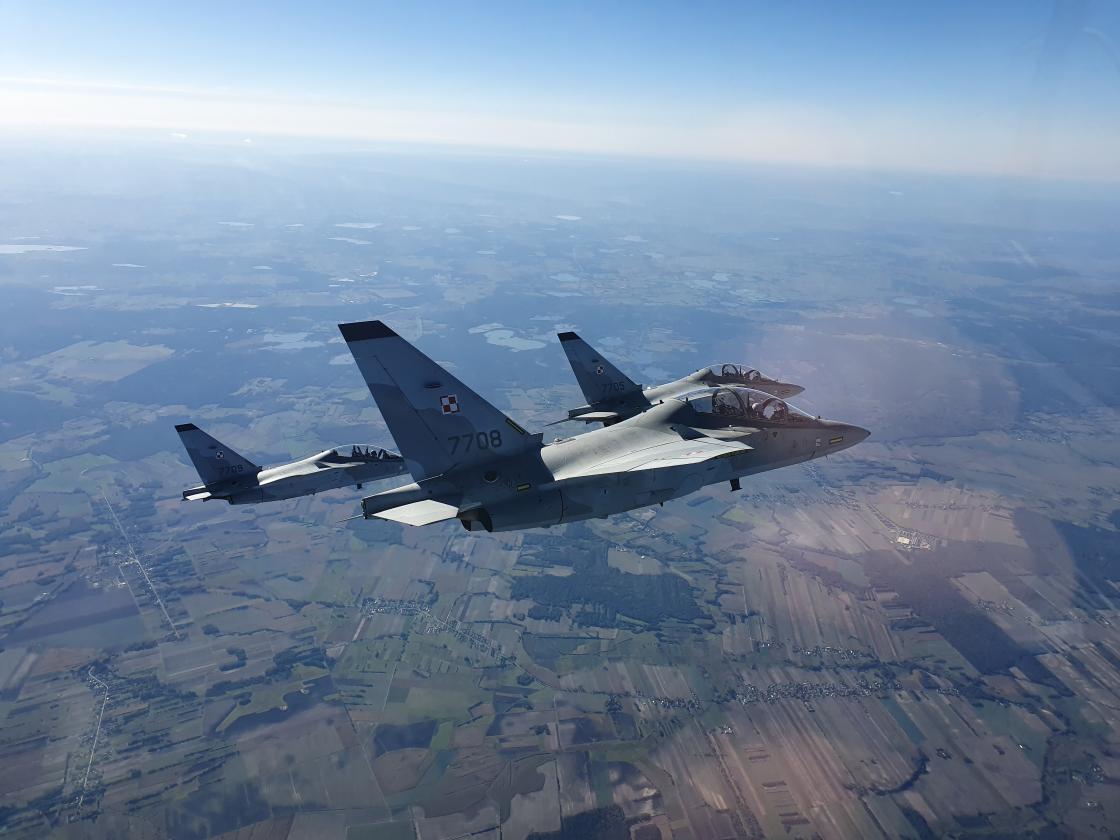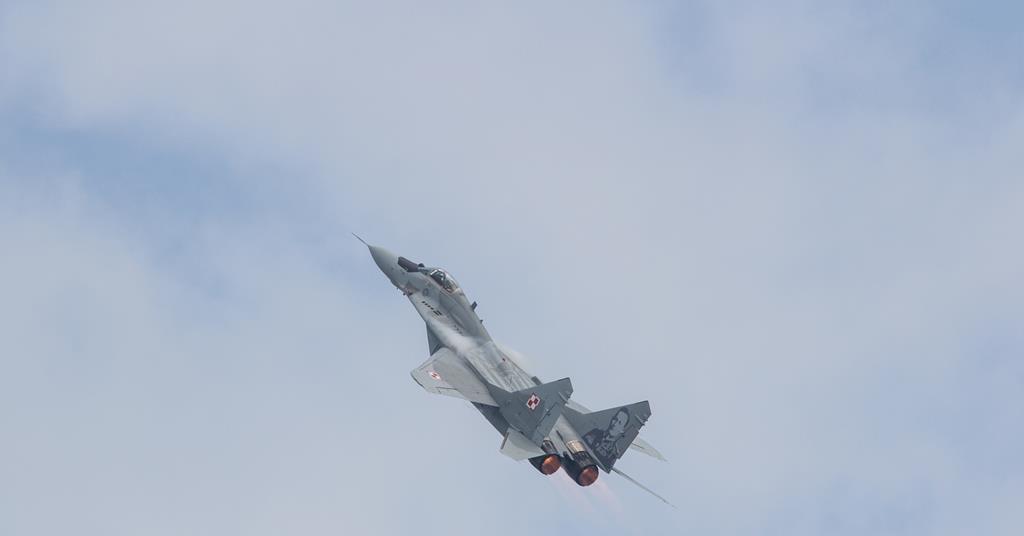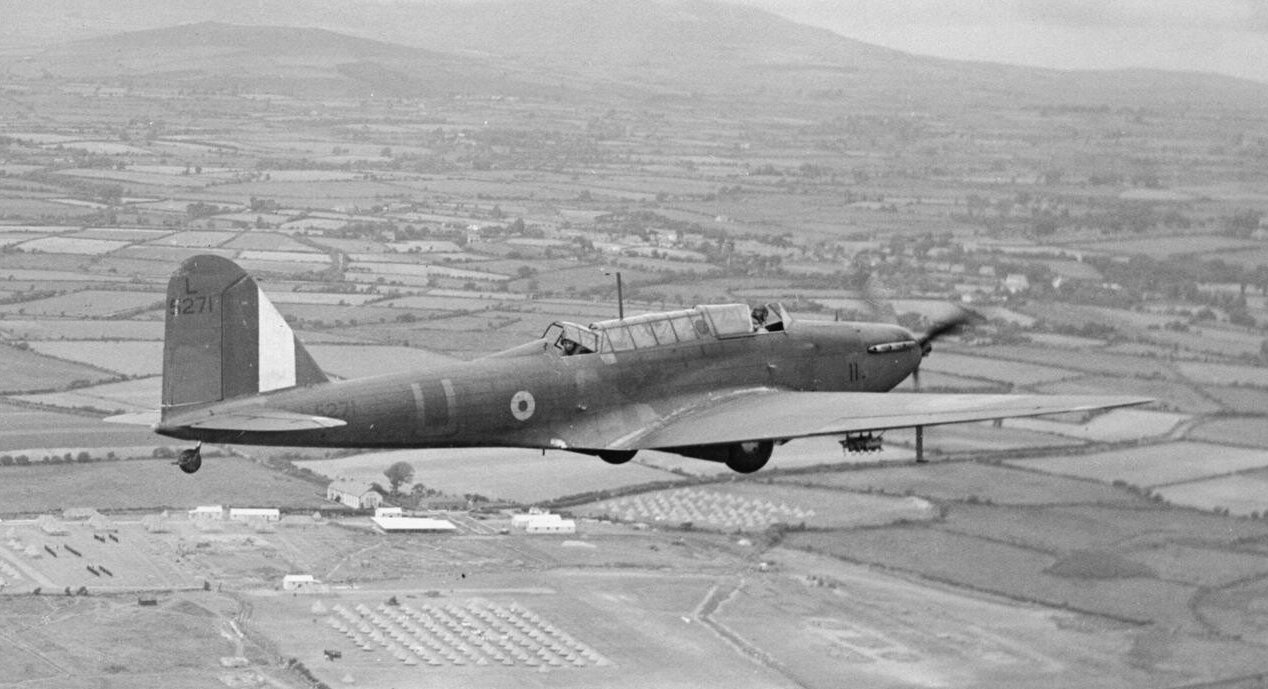Polish Air Force Aircraft - Reuters, the news and media division of Thomson Reuters, is the world's largest multimedia news provider, reaching billions of people worldwide every day. Reuters provides business, financial, national and international news to professionals via desktop terminals, the world's media organizations, industry events and directly to consumers.
The PZL P.24 became one of the most successful Polish aviation export products. It was sold to Bulgaria and Greece (each version reflecting the needs of the customer) and was sold alongside a production license to Romania and Turkey.
Polish Air Force Aircraft

Bulgarian fighters during the war were assigned to a fighter combat school (a factory designed by Polish engineers was planned to produce a new model under license but the war intervened). Romanian P-24 aircraft fought against the Soviet Union.
Information You Can Trust
Turkish ones were never used in combat and were retired in 1945. The Iskra is the mount of the Polish national aerobatic team, the Biało-Czerwone Iskry (the white-red sparks). The group has its roots in the Grupa Rombik (The Little Rhombus Team) that performed at air shows in Poland in the early 1970s.
The Iskry made their debut in 1991, at the Ławica airport show in Poland. The Polish industry then showcased the Iskra jet all around Europe, the jet making appearances at the 1976 and 1977 Farnborough Air Shows, and at the 1977 Paris Air Salon.
In 1964 the TS-11 prototype broke four in-class records, including a speed record of 521mph (839kph.) Intriguingly, the TS-11 never received a NATO reporting name. The Iskra (‘spark’) was the first indigenous Polish jet aircraft design.
The TS-11 Iskra was a straight-wing trainer designed by Tadeusz Sołtyk (mentioned above in the PZL-46 description) at the Warsaw Institute of Aviation. It made its first flight on February 5 1960. Between 1962 and 1987 more than 420 examples were manufactured, fifty of which were exported to India.
Save The Hush-Kit Blog Our Site Is Absolutely Free If You’ve Enjoyed An Article You Can Donate Here Your Donations Keep This Going Thank You
The Indian Air Force operated Iskra trainers from 1976, received a further 26 examples in the 1990s, before retiring the type in 2004. The RWD name comes from the initials of three talented young engineers – Rogalski, Wigura and ewiecki – who established their own company and designed increasingly successful aircraft.
In the early 1930s the sports aircraft competition to win was the Challenge International des Avions de Tourisme, an incredibly demanding series of trials for aircraft intended to accelerate the development of aeroplane technology for trans-European touring.

U.S. lawmakers pushed President Joe Biden's administration on Monday to facilitate the transfer of fighter aircraft to Ukraine from Poland as well as other NATO and Eastern European countries, after a plea on Saturday from Ukrainian President Volodymyr Zelenskiy.
read more "The authorities of the Republic of Poland ... are ready to deploy – immediately and free of charge – all their MIG-29 jets to the Ramstein Air Base and place them at the disposal of the Government of the United States of America,"
The Hush-Kit Book Of Warplanes Will Feature The Finest Cuts From This Site Along With Exclusive New Articles Explosive Photography And Gorgeous Bespoke Illustrations Pre-Order The Hush-Kit Book Of Warplanes Here
the ministry said. In the 1960s Iskra stood a chance to become the standard jet trainer of the Warsaw Pact air arms, a hugely significant opportunity to consider the potential order size. It lost, however, to the Czechoslovakian Aero L-29 Delfín, despite beating it in the official assessment.
It was clear the Soviets had no wish for the Poles to win anything. Poland became the only Warsaw Pact nation to operate the Iskra. The sole prototype malfunction suffered a hydraulically operated landing gear malfunction in August 1939, making an evacuation from Warsaw impossible.
It is believed to have been served and to have served as an aircraft with the Luftwaffe. As for the pilot, Aleksander Onoszko, he flew 43 combat sorties in World War II with the Polish 304 Bomber Squadron on Wellingtons, later flying transatlantic missions on BOAC B-24 Liberators.
Several survived the War, which the Romanian government offered to return to Poland, however the Moscow-serving Communist government declined the offer as the existence of such planes would contradict the official propaganda line which claims that all pre-war Polish aircraft were utterly inferior.
At least two aircraft were repaired by the Germans and sent to the Rechlin E-Stelle for testing. Two examples of the aircraft were flown by the Soviet air force. In 1934, the RWD design team started work on a light twin for the ministry of transport, a design intended to carry eight people over medium distances at high speed.
The ministry did not pay at first, as a form of revenge on the factory which had refused to let itself be nationalised. In September 1939 the units equipped with the Łoś fought bravely against German armor and supply columns, but unfortunately their full potential was never reached due to grave tactical errors by the Polish high command.

Some airframes were evacuated to Romania where they remained for the rest of the war; some of them were successfully used by the Romanians against the Soviet Union. Ukraine's military already flies Russian-made aircraft, making them the best choice for Ukrainian pilots who already know how to operate them, experts say.
Combat pilot training on U.S.-made aircraft can take years and requires a different pipeline for maintenance. This dialogue will close in 60 seconds or you can click the exit icon in the top right corner to go back to the flight map immediately.
We appreciate you trying our new Live Surface Map feature. If you have a couple of minutes, we'd like to collect your feedback on it. "At the moment, we don't have a replacement for the MiGs, but we are doing everything to speed up the processes," Nad said in a statement released after he spoke by phone with U.S.
Secretary of Defense Lloyd Austin. The RWD-6 was basically a prototype, and only eight were built. Some of them led extremely eventful lives: two were sold to Spain, where they were used as liaison aircraft in the civil war.
One crashed into the Baltic Sea while carrying a famous general to see his wife returning from the US on a Polish ocean liner. One was bought by a French aviation institute and was irreparably damaged when ignorant mechanics used acid to clean the engine (many parts were made of the lightweight Elektron which dissolves in acid).
Nowkuński, the engine design genius, died in a climbing accident in the Tatra mountains. Not a single RWD-9 survived the war. Poland is supporting Kyiv with defensive weapons, but has said it would not send jets to Ukraine, as it is not a direct party to the conflict between Ukraine - which is not a NATO ally - and Russia.
It had a delta wing with a 45-degree sweep, similar to that of the MiG-21. Two variants of the jet were to be manufactured – B and A, the former was to be a trainer, the latter was to an attack aircraft.
For commonality, armament was to be the same as that of the ‘Fishbed’. modified, the Grot design was modified to have one of the MiG-19's RD-9B engines in place of the originally decided twin SO-2s. Before we dig into the history of some brilliant and often overlooked aeroplanes, let us first look at the reasons that the Polish aviation industry was the way it was.

First, it's worth noting that Poland was the only country in Europe to match German developments in glider design in the pre-war period. While Germany was forced to choose that path due to the Versailles Treaty restrictions, Poland was simply poor, having just been resurrected in 1918 after 123 years of slavery under Prussian, Austro-Hungarian and Russian occupation.
After the TS-11, designer Tadeusz Sołtyk then proceeds to pursue an even more ambitious goal – the creation of a modern supersonic aircraft, the TS-16 Grot (‘Arrowhead’). The first steps in the Grot project were taken in 1958. The main intention was to create a lead-in trainer that would allow the pilots to get acquainted with flying a supersonic aircraft.
With the rather demanding MiG-21 forming the bulk of the Polish Air Force – this was very much needed. Originally, the design concept was known as the TS-13, which started in 1959. It resembled the F-101 Voodoo in wing planform.
Then, after the T-38 Talon made its maiden flight, the Grot was redesigned with the benefit of consideration of the Northrop design, and ultimately proposed to the air force. However, politics stopped the Grot dead in its tracks.
The engineer Bronisław Żurakowski created the Wilga 2 prototype with a new lighter fuselage in 1963. Still using a flat Continental engine, the aircraft was still current. The ultimate solution came in the form of the adoption of the far more powerful AI-14 Soviet radial engine (which worked well at low RPM).
This also contributes to the excellent STOL properties of the aircraft. With all these modifications in place the aircraft became the Wilga 3. This was further refined as the PZL-104 Wilga 35 which made its maiden flight in June 1967.
Stanisław Prauss reached England and in 1940 was employed by Westland Aircraft, where he worked on the Lysander, the Whirlwind and the Welkin. In 1946 he found employment at de Havilland, where he continued to work when the company became Hawker Siddeley;
notable aircraft he contributed to included the Comet, Trident and the A300. Stanisław Riess also reached England, and was employed by the AAEE at Boscombe Down. He was assigned the task of finding the reasons for the tendency of the Handley Page Halifax to enter a flat spin: during one of the flights he was unable to recover from the spin and was killed in the crash.

The data collected during the fatal flight helped cure the problem. A total of 110 examples of the Iskra were still in service in the Polish Air Force in 2002, by 2013, only thirty airframes were still flying.
In 2016 Poland took delivery of the Alenia Aermacchi/Leonardo M-346 – the replacement of Iskra. The last training sortie made by an Iskra took place on December 9, 2020. Currently the Polish Air Force only has its aerobatic team, the Biało-Czerwone Iskry, flying the type.
Second, it has to be remembered that this newly independent nation only had 19 years in which to develop its indigenous technology before World War II started. Thirdly, the birth of the new Poland fueled an incredible amount of patriotic confidence within the Polish people, and aviation became one of the fields where they felt they could excel.
The prototype was used in a feature film where it took part in scenes filmed with a flight of PZL P-11 fighters. During the filming, the RWD factory test pilot, Aleksander Onoszko, outran the escorting fighters, thus creating even more animosity against RWD within the red-faced air force establishment.
Their pride stung, rather than ordering the RWD-11 as a fast medevac aircraft or a multi-engine trainer, the top brass simply pretended it did not exist. Show sources information Show publisher information Use Ask Statista Research Service
A smaller specialised crop sprayer aircraft was built in smaller series at the Okęcie works, the PZL-106 Kruk (Raven), also tested with a turboprop. For 42 years, Polish pilots flying the Kruks have been supporting crop-dusting operations in Sudan (worthy of an article in itself that we may come back to).
Competition gliding's popularity in Poland was growing. A reliable workhorse towplane was in demand, moreover, there was a lack of a modern, light multi-purpose aircraft. Short take-off and landing would be a desirable, combined with good performance and low-operating costs.
The requirement led to creation of the PZL-104 Wilga (thrush) at the WSK Okęcie facility. Designed by a team led by Ryszard Orłowski, it was made entirely of metal. The aircraft received a flat WN-6RB engine designed by Witold Narkiewicz.

The prototype made its maiden flight on April 24 1962. The engine tended to overheat requires fuselage redesign. During the Cold War period, Poland was asked by the Soviets to develop an agricultural airframe that would incorporate jet propulsion.What followed was an utterly bizarre beast, the PZL M-15 Belphegor*.
Not only was it the only agriculture-focused jet design, it was also the only serially-produced jet-powered biplane. The goal was to replace the ubiquitous An-2 (produced in series in Poland for the Soviets). The Belphegor was a successful design for its time – when economy and fuel consumption was not a priority!
It was tailored to serve large fields and was capable of long-haul ferry flights. With vast fields to operate over, as impractical as the aircraft seems today, it served its purpose well back when it was needed.
Almost 200 examples were made between 1976 and 1982. You only have access to basic statistics. This statistic is not included in your account. Thank you. Our aviation shop is here and our Twitter account here @Hush_Kit. Sign up for our newsletter here.
The Hush-Kit Book of Warplanes will feature the finest cuts from this site along with exclusive new articles, explosive photography and gorgeous bespoke illustrations. Pre-order The Hush-Kit Book of Warplanes here. Work on the PZL-46 light bomber commenced in 1936, with Stanisław Prauss as the lead designer.
Tadeusz Sołtyk, who would later work on the notorious TS-8 Bies and TS-11 Iskra, was his deputy. Henryk Milicer, who would go on to design the British Percival Provost trainer, was also a member of the team.
Losing on their home turf, the German contingent looked on bitterly as the Polish crew were decorated at the Berlin-Staaken airfield ceremony. Sadly, several weeks later the victorious crew perished in heavy weather over Czechoslovakia. Since Poland won the Challenge, it had to host the next contest in 1934, and this time the new Germany (under Hitler) intended to win back the Challenge.
With state aid, Messerschmitt's Robert Lusser set about designing an aircraft which would have a chance of winning against anything the Poles could bring (no other country actually counted as viable competitors any more). This was to be the Messerschmitt Bf-108 Taifun, which in its first iteration with its huge flaps and tiny ailerons close to the wingtips, was extremely unforgiving to fly.
During flight testing, flutter was encountered for the first time on a Polish-designed aircraft. To discover the range of wing vibrations the Polish engineers used a gramophone installed at a right angle, with the record replaced with a cardboard sheet…and a pencil.
The necessary changes revealed in this ingenious testing were introduced and the RWD-11 proved to be safe and pleasant to fly. With its two 200 hp Walter Major engines and refined aerodynamics it boasted an impressive performance.
The PZL-37 bomber featured some other innovations, including a revolutionary main landing gear unit, with a single strut supporting twin, elastically suspended wheels – this arrangement was very compact, easy to fold into the engine nacelle, and well suited to operating from
unprepared fields. After a number of teething problems and modifications (including the introduction of twin vertical tailfins) the ‘Moose’ went into production. Over 90 examples were completed and test-flown before the war.
poland's air force, polish air force wwii, polish air force inventory, polish air force fighter jets, polish air force fighters, polish air force fleet, polish military aircraft, list of polish aircraft